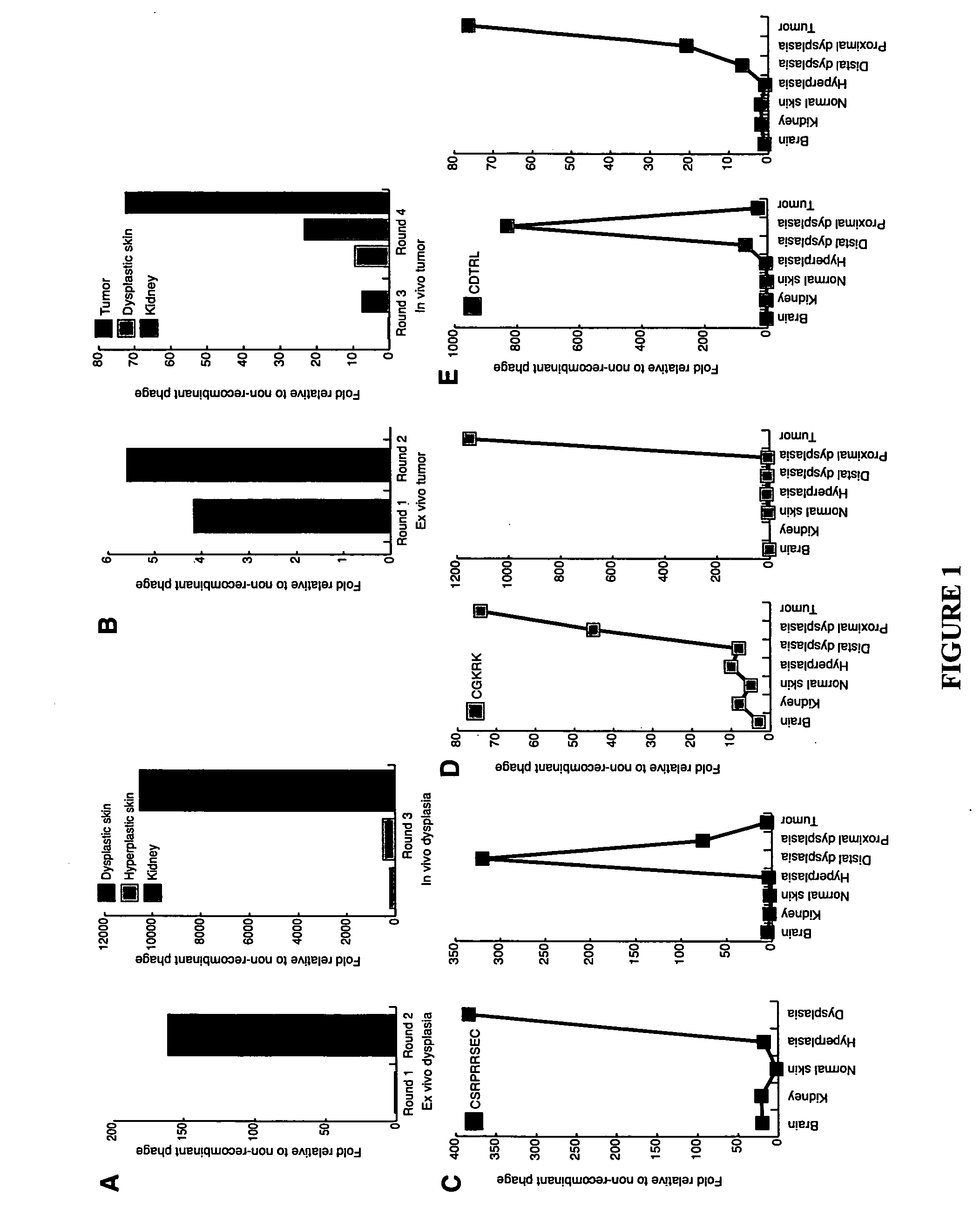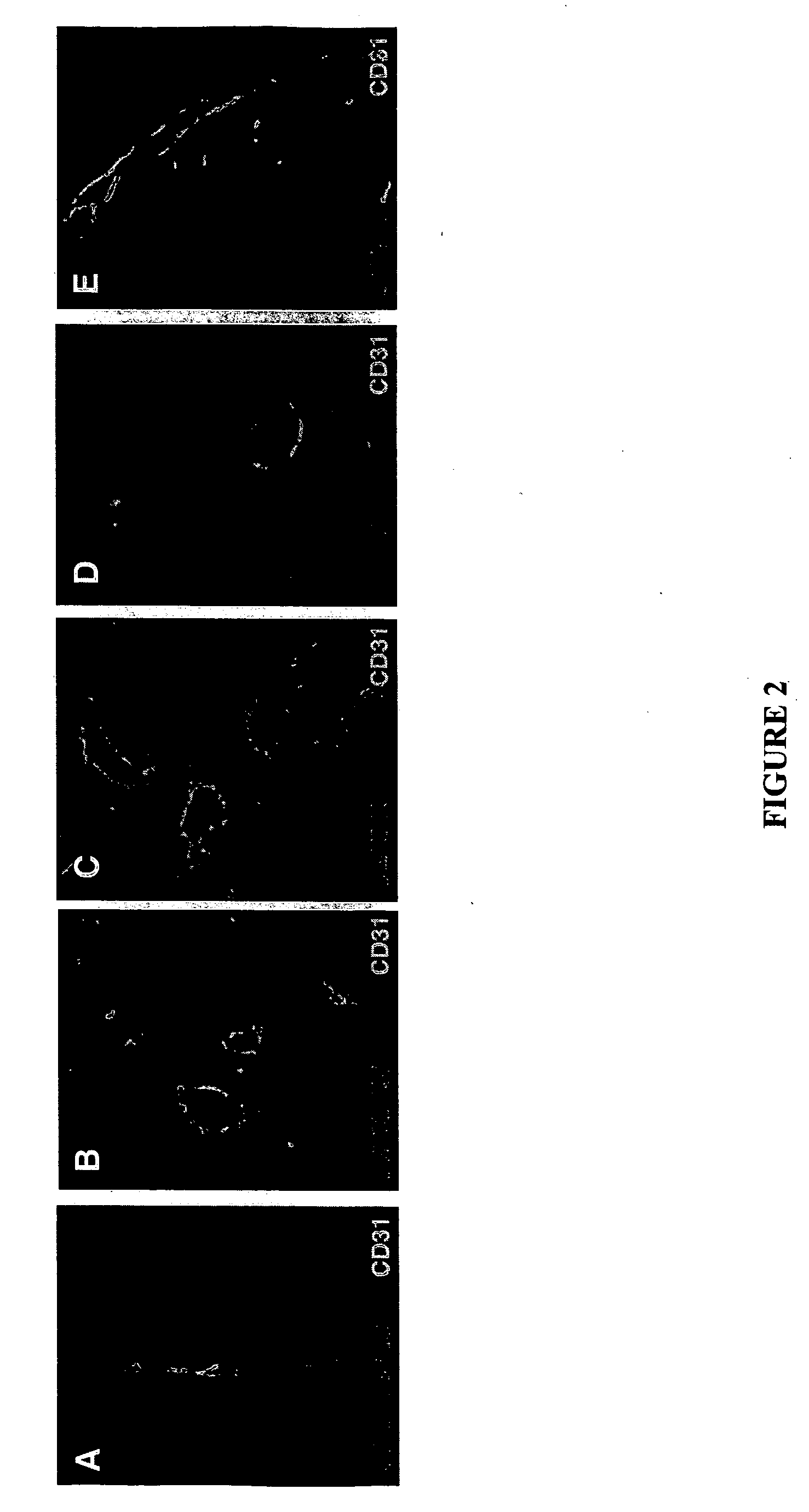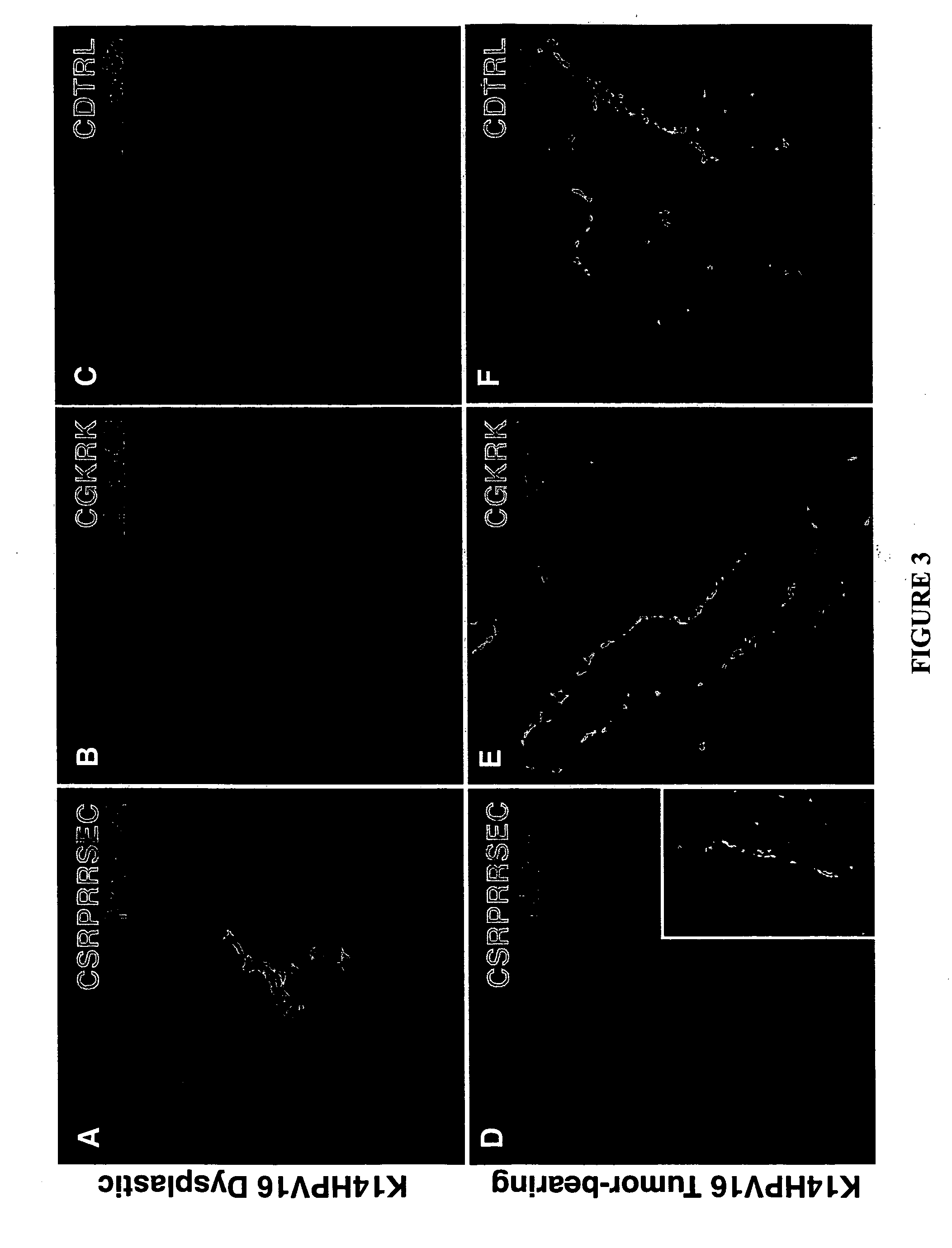Molecules that selectively home to vasculature of pre-malignant dysplastic lesions or malignancies
a dysplastic lesions and molecules technology, applied in the field of molecular medicine and drug delivery, can solve the problems of scarring and loss of normal tissue, lack of agents that are effective in selectively targeting cancer or pre-cancerous tissue, and progress in preventing or treating cancer, so as to reduce the risk of vasculature, and reduce the risk of progression to a malignancy
- Summary
- Abstract
- Description
- Claims
- Application Information
AI Technical Summary
Benefits of technology
Problems solved by technology
Method used
Image
Examples
example i
Phage that Selectively Home to Dysplastic Skin
[0122] This example describes identification of a peptide that selectively homes to dysplastic skin lesions.
[0123] To isolate peptides specific for dysplastic lesions, two rounds of selection were performed ex vivo followed by one round of selection in vivo. Ex vivo and in vivo phage selections were performed with an NNK-encoded CX7C (SEQ ID NO: 8) peptide library displaying 9-mer cyclic peptides with seven degenerate positions on Novagen's T7 415-1b phage vector; the library had a diversity of approximately 1×108. Phage selections and validations were performed essentially as described in Laakkonen et al., Nat. Med. 8:751-755 (2002).
[0124] For ex vivo selections, phage were incubated with dispersed cells from dysplastic skin removed from the ears and chest of K14-HPV16 mice with no macroscopic evidence of tumors at 4-6 months of age. The dysplastic skin lesions typically included a focal region of epidermal dysplasia flanked by adjac...
example ii
Tumor-Specific Homing Phage
[0129] This example describes identification of phage that selectively home to malignant skin such as squamous cell carcinomas.
[0130] To isolate phage that selectively home to squamous cell carcinomas (SCCs), two rounds of ex vivo panning selections were performed followed by two rounds of in vivo panning in K14-HPV16 mice having tumors histologically confirmed as squamous cell carcinoma grades II-IV (Coussens, supra, 1996). The enrichment rose from 6-fold relative to non-recombinant phage in the second ex vivo round to greater than 70-fold relative to non-recombinant phage in the second in vivo round (the fourth sequential round overall) as shown in FIG. 1B. From 192 sequenced phage clones, fifteen were selected for further analysis based on their frequency (48 from ex vivo round 2, 48 from in vivo round 1, and 96 from in vivo round 2) and their increased prevalence in the in vivo selections. Of these, four clones displaying the following amino acid seq...
example iii
Intra-Tissue Localization of Homing Peptides
[0132] This example describes localization of several homing peptides.
[0133] To characterize the nature of the selectivity of the dysplasia- and tumor-homing peptides, K14-HPV16 mice were intravenously injected with cloned phage displaying a particular peptide, and phage localization visualized using histological procedures. Peptide localization was further analyzed with chemically synthesized fluorescein-labeled peptides.
[0134] Phage were intravenously injected into 4 to 6 month-old dysplasia-bearing mice with dysplasia-homing phage bearing CSRPRRSEC (SEQ ID NO: 3). In parallel, a set of 9 to 12 month-old tumor-bearing mice were infused with one of the tumor-homing phage CGTKRKC (SEQ ID NO: 11), CGKRK (SEQ ID NO: 6) or CDTRL (SEQ ID NO: 7). Various tissues were collected from each mouse and analyzed by double label immunohistochemical staining using an anti-T7 antibody to detect phage and an anti-CD31 antibody to detect endothelial cel...
PUM
| Property | Measurement | Unit |
|---|---|---|
| Length | aaaaa | aaaaa |
| Therapeutic | aaaaa | aaaaa |
| Fluorescence | aaaaa | aaaaa |
Abstract
Description
Claims
Application Information
 Login to View More
Login to View More - R&D
- Intellectual Property
- Life Sciences
- Materials
- Tech Scout
- Unparalleled Data Quality
- Higher Quality Content
- 60% Fewer Hallucinations
Browse by: Latest US Patents, China's latest patents, Technical Efficacy Thesaurus, Application Domain, Technology Topic, Popular Technical Reports.
© 2025 PatSnap. All rights reserved.Legal|Privacy policy|Modern Slavery Act Transparency Statement|Sitemap|About US| Contact US: help@patsnap.com



